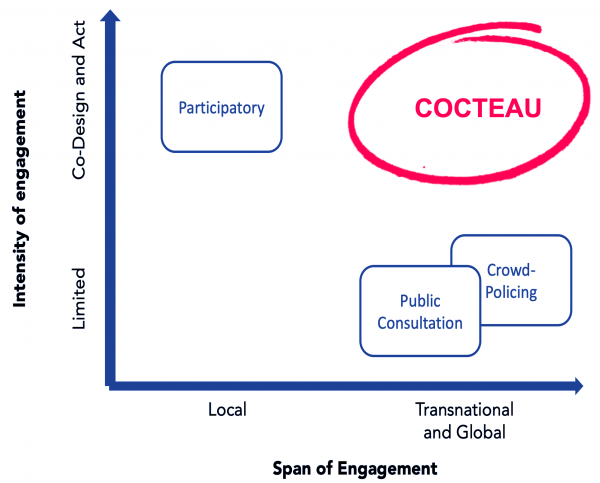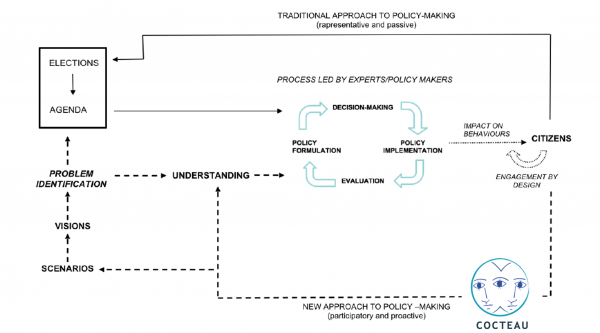Co-Creating The EuropeAn Union
What is behind it?
Concept
COCTEAU is a gamification tool that has the ambition to enable large-scale citizen engagement and co-creation in support of policy makers

Context

Policymakers increasingly need user input in approaching complex governance decisions in conditions of uncertainty
- Understanding the preconditions for compliance and buy-in
- “Texturing” of public policy decisions
- Sharpening policy options and scenarios
- Linking short-term with medium- and long-term decisions
Incremental design approach
During the last 12 months, the platform has undergone a design and development process that can be summarised in 3 steps
A theoretical model
based on literature review and experts interviews
A paper-based model
based on an in-person activity held internally to the TRIGGER Consortium where we tested all the engagement mechanisms
A digital mock-up
developed with an agile approach that has undergone three different feedback processes with different communities (expert and non-expert users)
Theoretical Model
Policymakers increasingly need user input in approaching complex governance decisions in conditions of uncertainty

- Understanding the preconditions for compliance and buy-in
- Texturing of public policy decisions
- Sharpening policy options and scenarios
Digital Mockup
COCTEAU is a gamification tool that has the ambition to enable large-scale citizen engagement and co-creation in support of policy makers
Main Goals
Collect ideas and thoughts from communities
through crowdsourcing and gamification activities on a digital platform, this aims at helping policy makers to brainstorm more sustainable policies regarding modern societal problems (COVID-19, AI, Internet policy, achieving the SDGs, etc.)
Enhance governments’ capacity to foresee solutions that have a better fit between policy makers preferences and people’s vision of the future through a sentiment-analysis approach. This aims at creating a policy making process that ultimately can result in greater effectiveness and accountability for policy makers
Improve the spontaneous communication between (local) governments and specific communities, contributing to recover trust in public institutions and policy makers

